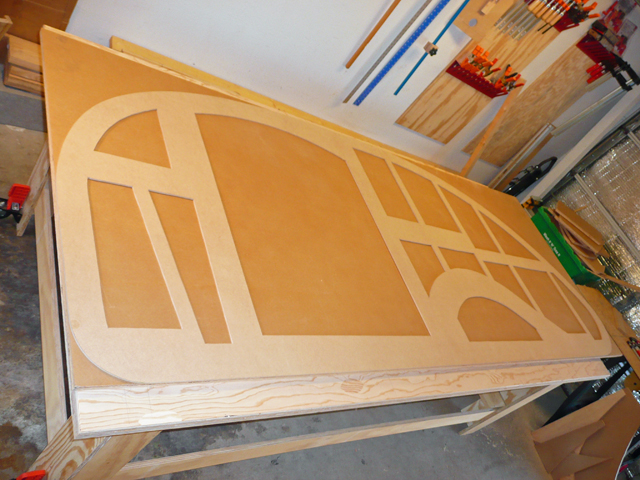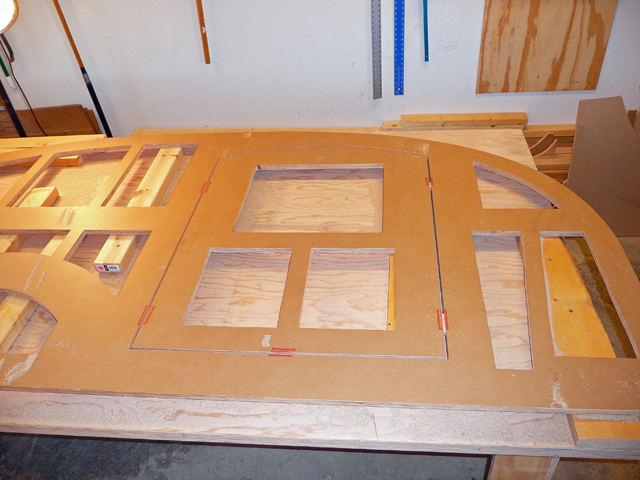dh wrote:Make a template out of scraps, then use a template bit, which has a bearing on the top, and cut those openings out, as the bearing will ride on your template, life should be relatively easy.
There are three basic ways of routing an opening. The first two use a pattern bit with bearing.
The first way with pattern bit is to trace the outline of the opening or cut out using the template. Remove the template and use a jig saw or other type of saw to rough cut the opening. Put the template back in place and use the router with template bit to "clean up" the edges. (The template can be clamped if it is big enough to allow room for the router base to clear the clamps or the template can be held temporarily in place with double-sided tape.)
The second way takes a "short" pattern bit. The template itself will need to be thicker material - 3/4" or so. Install the template. Then use the router to make multiple passes or cuts of about 1/16" at a time until the depth of the cut is about 1/4". Use a jig saw to cut through the full thickness of the material keeping the jig saw cut line centered in the width of the router bit cut (dado). After the opening is cut, clean up the edges with the router with the bearing of the template bit riding on the edge that was previously routed.
Like everyone said, a third way to route an opening is to use a guide bushing and a spiral, straight, or shear bit. (These bits do not have bearings.) The bushing rides against a template (in the picture below I used 1/4" mdf). Like the second method, the bit is advanced deeper with each pass. There is clearance between the bushing and the bit, so unlike the first two methods, your template has to take into account this offset.

I used this method to cut out my doors.

 Get some practice or use a jig saw.
Get some practice or use a jig saw.


